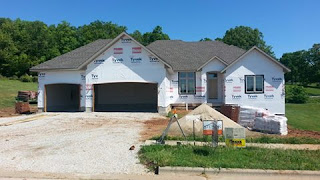In
our previous blog post, we talked about the features that are becoming less common in new homes according to Realtor.com. Let’s turn our attention to the features
you are most likely to find in new homes. (Again, our comments about what we
find in the Springfield market are in parentheses.) If you are getting ready to
sell your home, this list may give you some ideas of how to improve your home’s
appeal.
1. Walk-in closet (Although walk-in
closets are not expected in every room, storage is always a concern.)
2. Laundry room (Laundry rooms seem to be getting bigger to
accommodate front-loading machines. People love having sinks in their laundry
rooms. And an area where families can dump backpacks and shoes like mud rooms is
a popular feature, too.)
3.
Low-emissivity windows
4.
Great room (Open floor plans with great rooms and hearth
rooms remain appealing to Springfieldians.)
5. Energy Star appliances (We haven’t
had many buyers commenting or requesting energy-saving features. But usually,
the greener the home is the more attractive it is to buyers.)
6.
Energy Star windows
7. 9-foot ceiling on the first floor (Higher
ceilings do give a home a more open, upscale feeling.)
8. 2-car garage (Most Springfield buyers want three. Again,
storage is always a concern. The more the better.)
9. Programmable thermostat. (We don’t have people
requesting them much, but new homes in Springfield are likely to have them.)
10. Granite countertop (Granite remains popular but we are
seeing more and more people wanting marble.)
Do you agree with this list? Are these the
features you would want in a new home? Let us know.
http://www.realtor.com/news/the-most-and-least-likely-features-youll-find-in-a-new-home-today/?identityID=6188292&MID=2015_0508_WeeklyNL&RID=281119602&cid=eml-2015-0508-WeeklyNL-blog_1_unlikely_features-blogs_sell


